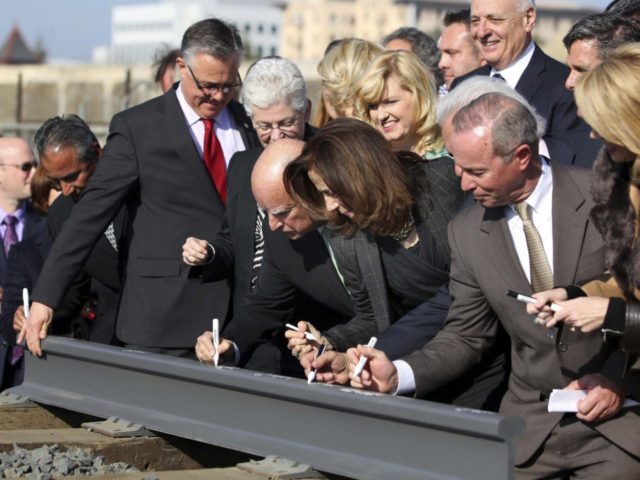The Los Angeles Times reported last week that California’s high-speed rail project still plans to meet its legal commitment to travel from San Francisco to Los Angeles in 2 hours and 40 minutes or less.
But there are still doubts. The bullet train must, by law, travel over curved mountain ranges 30 percent faster than France’s TGV bullet train travels in a straight line.
Proposition 1, which authorized the high-speed rail system, was approved by voters in 2008 with the legal commitment that the high-speed train would be designed to travel over the 438 miles from Los Angeles to San Francisco in 2 hours and 40 minutes.
That means the train must whisk passengers over three mountain ranges and through five major cities at an average speed of 164 miles per hour. That would be over 30 percent faster than the world-renowned TGV, which speeds from Paris to Lyon across 243 miles of board-flat French countryside at an average speed of 121 miles per hour to arrive in one hour and 59 minutes, according to TGV schedules.
The Los Angeles Times obtained California High Speed Rail Authority (CHSRA) documentation through a public records request for computer simulations that continue to claim the bullet train will make the trip in 2 hours, 37 minutes and 50 seconds — or 3 minutes and 10 seconds faster than the legal obligation.
Breitbart News reported in February 2014, when CHSRA’s draft business plan made similar time of transit claims, that the bullet train’s management had already agreed, for cost reasons, only to build tracks from San Jose in the Bay Area to the San Fernando Valley north of Los Angeles.
The remaining legs — San Francisco to San Jose, and from the San Fernando Valley into downtown Los Angeles — would run on decades-old Caltrain train track beds. Although passengers would not have to change trains and the track infrastructure would be upgraded and electrified, the curving layout of the tracks would force trains to slow dramatically. The speed loss would have to be made up with an even higher average speed for the trip from the San Fernando Valley to San Jose.
Despite CHSRA also agreeing to save costs by not tunneling for 13 miles under the Pacheco Pass through a series of Southern California granite mountains, Breitbart News reported in May 2016 that the bullet train’s project cost had spiked from $33 billion to $77 billion.

COMMENTS
Please let us know if you're having issues with commenting.